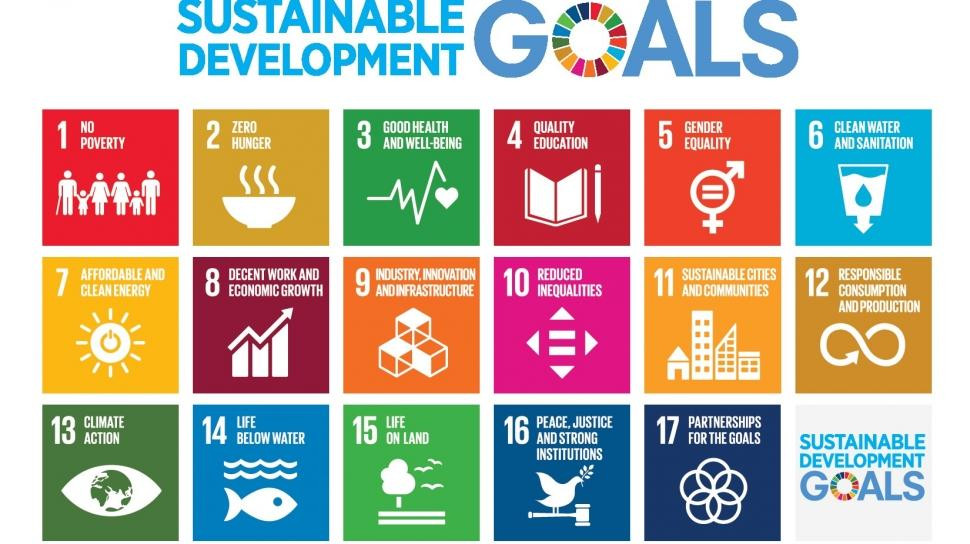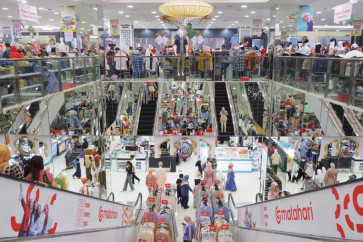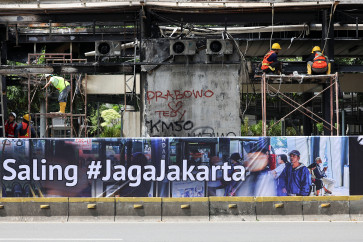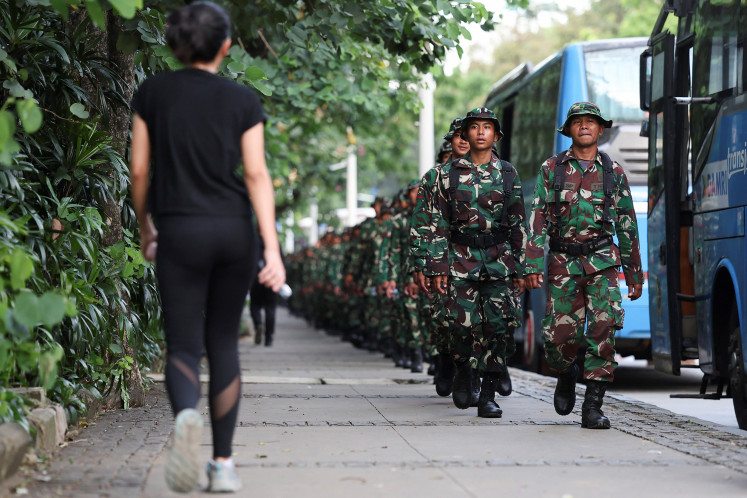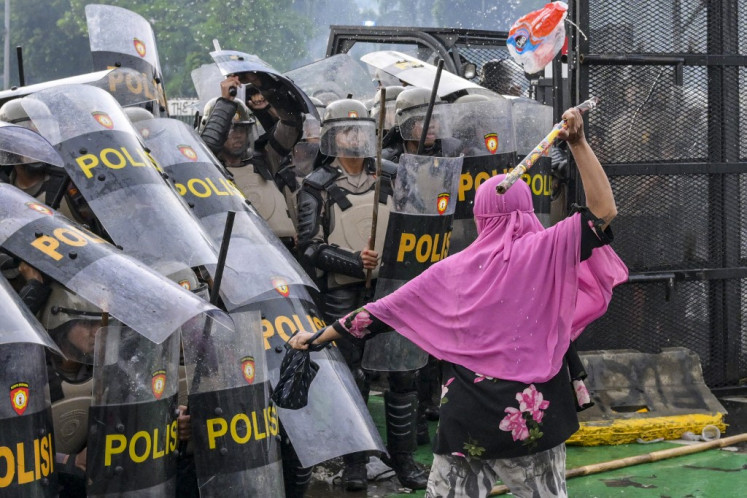Popular Reads
Top Results
Can't find what you're looking for?
View all search resultsPopular Reads
Top Results
Can't find what you're looking for?
View all search resultsA crossroads to more sustainable, inclusive growth
The COVID-19 pandemic has widened the SDG financing gap by $1.7 trillion on top of the existing shortfall of $2.5 trillion in annual SDG financing.
Change text size
Gift Premium Articles
to Anyone
T
he COVID-19 pandemic spares no one. But its consequences for health, social and economic conditions are unequal and disproportionately affect the poor and vulnerable. The pandemic is also eroding the global middle class.
Against this backdrop, the Sustainable Development Goals (SDGs) and its underlying principle of leaving no one behind are more than just catchphrases. They provide the framework for addressing the impacts of the pandemic and future crises in a holistic, sustainable and inclusive manner.
The COVID-19 pandemic is expected to add 78 million people into the number of extreme poor or those living under US$1.90 per day in developing Asia in 2020, the Asian Development Bank (ADB) estimates. The number is even larger for those living below $3.20 a day with an additional 162 million people expected to be pushed into poverty in 2020 in developing Asian countries. As progress in poverty reduction is reversed, a considerable erosion of Asia’s middle class is also projected. South Asia’s middle-class population is estimated to decrease by 32 million and East Asia’s by 19 million in 2020 because of the pandemic, Pew Research Center notes.
If the ongoing pandemic has taught us one thing, it is that we cannot go back to the old paradigm of focusing solely on economic growth. Patterns of growth matter in ensuring that all segments of societies participate in and benefit from economic growth. And the SDGs and its mantra of leaving no one behind offers the blueprint for building back better from COVID-19 and other crises, with a focus on green, inclusive and resilient growth.
A recent report by ADB’s Independent Evaluation Department (IED) offers some important observations on how to strengthen the use and potential of this blueprint. The report finds that reinforcing the use of the SDGs framework requires first that countries take strong ownership of the SDG’s 17 goals and targets; second, that the country financial requirements for reaching the SDGs in a post-pandemic setting are urgently re-assed and addressed; and third that data gaps for monitoring development outcomes are tackled.
Ownership demands greater localization of the SDGs framework. Localizing the SDGs means tailoring them to country contexts, especially at sub-national levels. Local governments, communities and stakeholders are important actors in ensuring that development outcomes promoted by the SDGs are embedded in public service delivery especially those targeting poor and marginalized households and individuals at risk of being left behind.
As the IED report notes, localizing the SDGs will benefit from raising social awareness on the SDGs, establishing local SDG champions, and helping local governments incorporate the SDGs into their planning and budgeting processes.
Part of efforts to localize the SDGs are usually conducted through voluntary national reviews (VNRs). These country-led VNRs draw on feedback from numerous stakeholders, including groups representing women, children, local communities, businesses, academia, and persons with disabilities, among others. Since 2016, 168 countries out of the 193 countries that adopted the SDGs have now presented at least one VNR. Nevertheless, further concrete and specific SDG localization initiatives are needed to accelerate SDG implementation. For example, the Indonesia government is working to link public transfers of funds at the district and village level to SDG targets and indicators.
With respect to financial requirements for SDG implementation, addressing the already existing gap and the one resulting from the current crisis is imperative. The COVID-19 pandemic has widened the SDG financing gap by $1.7 trillion on top of the existing shortfall of $2.5 trillion in annual SDG financing. Mobilizing funding has, however, become more challenging. The International Monetary Fund forecasts that public debt has reached 123.9 percent of gross domestic product in advanced economies and 62.5 percent in emerging economies in 2020.
Against this backdrop, there is a huge need to help countries re-calculate their specific SDG financing requirements to help design mechanisms aimed at generating funding and development interventions from both public and private sources.
As the IED report notes, governments will have to step up their efforts to mobilize domestic resources. Private sector efforts must be also unlocked for the SDGs. And this does not necessarily mean only mobilization of resources through capital markets, but also stimulating the alignment of business decisions of companies with the SDG.
A 2019 survey of 250 companies worldwide by the World Business Council for Sustainable Development and Det Norske Veritas and Germanischer Lloyd, reported that 58 percent are considering the SDG impacts of their organizations’ operations. But at the same time companies note that a barrier for them to taking additional action is the lack of clarity on regulatory and policy signals that would motivate them to support SDG through their business decision.
Understanding that a public private partnership is indispensable to achieve the SDG and taking action to promote this partnership is one of the most important policy steps demanded at this time if we want to give any hope to the SDG aspirations.
Finally, it is fundamental to have timely and reliable data to track and monitor the SDGs. What gets measured gets managed, which at least will improve the chances of achieving the SDG. But the pandemic has had a toll in this area as well.
At the height of lockdowns in May 2020, about 65 percent of 122 national statistical offices surveyed by the World Bank and UN DESA have ceased operations, while 96 percent have either partially or fully stopped field data collection activities involving face-to-face interviews. The disruptions caused by the pandemic to data collection of statistical offices highlight the need for equipping countries with the capacity to conduct non-traditional data collection methods such as the use of surveys administered through cell phones, websites, or satellite imagery.
The COVID-19 pandemic is the most unprecedented development challenges the world has ever faced. However, it also offers a reality check, reminding us that transformative development opportunities are most effective when they tackle the root causes of unequal and unsustainable growth. Avoiding future pandemics with their myriad of health, social and economic challenges is best achieved by an integrated and holistic development approach like the one supported by the SDGs.
While the pandemic has made SDG achievement more challenging, it has not made it impossible nor less urgent. Indeed, it will be up to us to move beyond the tragedy of the COVID-19 pandemic and turn it into a catalytic for a green, sustainable, and inclusive future.
***
The writer is director general of Independent Evaluation Department, Asian Development Bank.

